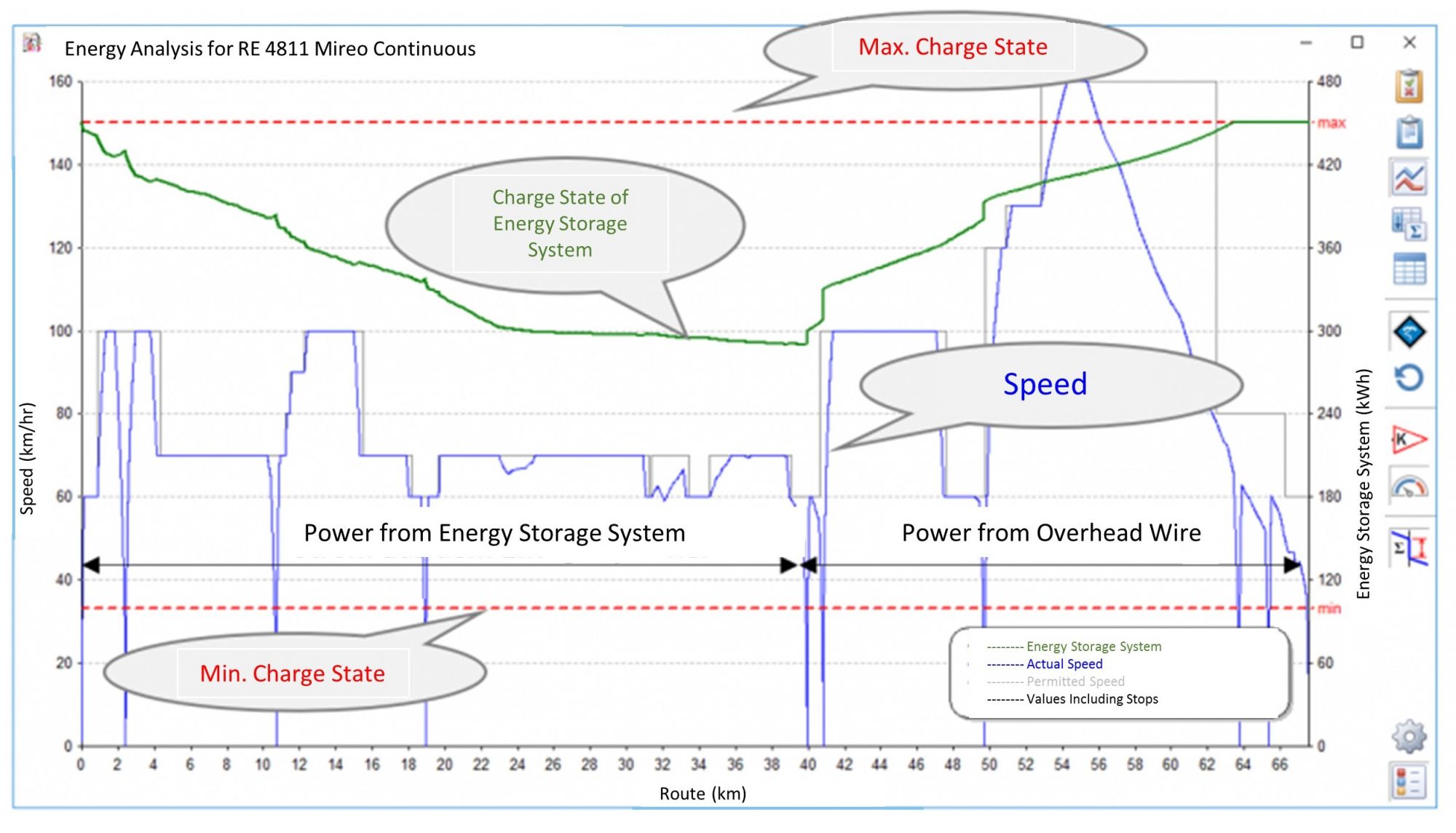Energy Calculation
The FBS module graphic timetable will support you easily, answering the questions above.
In the train diagram representing the movement of a concrete train along the line actually not only the travel time is shown, but also the theoretic (and average) energy demand for the whole ride in kWh. Is this value bigger for the one multiple unit, for the other or for an alternative loco-hauled train? The replies to such questions and the direct valuing comparison of alternative opportunities - with FBS it's a matter of seconds and a few clicks.
Electrical energy is rather offered by flexible rates and dependent from the daytime. iPLAN offers the user, who is interested in a cost assessment, to preset time or rate limits and let the program calculate, how the rides of concrete timetables and their energy demand can be distributed over this time and rate limits.

Furthermore not only for driving but also meanwhile retention times energy is used up. This connections are described with efficiency rates, which has to be present e.g. in terms of effieniency performance maps to carry out meaningful calculations. Only when you know this energy consumption and the influence of further circumstances (energetic recovery, driving regime) gains a data base to determine the expenses. For these energy consumption calculations (e.g. for competitive tendering procedures), FBS supports its users with the integrated energy module. Of course, iRFP also offers calculations as part of its consulting services.

Aspects of Calculation
FBS covers a variety of aspects within its energy calculation features, e.g.
- Energy demand over course of the journey / of the operating program
- Savings through energy-efficient driving
- heating of performance components
- time-weighted stress curve
- Regenerative power supply
- circulation-related evaluation
- Efficiencies
- different driving regimes
- graphical and tabular evaluation
- and much more
Vehicles with alternative fuel traction concepts
The electrification of a line which is still operated with diesel vehicles is not economically representable in every case. Vehicles run by alternative fuel traction offer new possibilities which can now also be simulated with FBS, e.g.:
- Proof of concept
- Dimensioning of energy storage
- Charging state of energy storage device over the course of the trip
- Additional charging possibilities e.g. reversing station
- and much more


